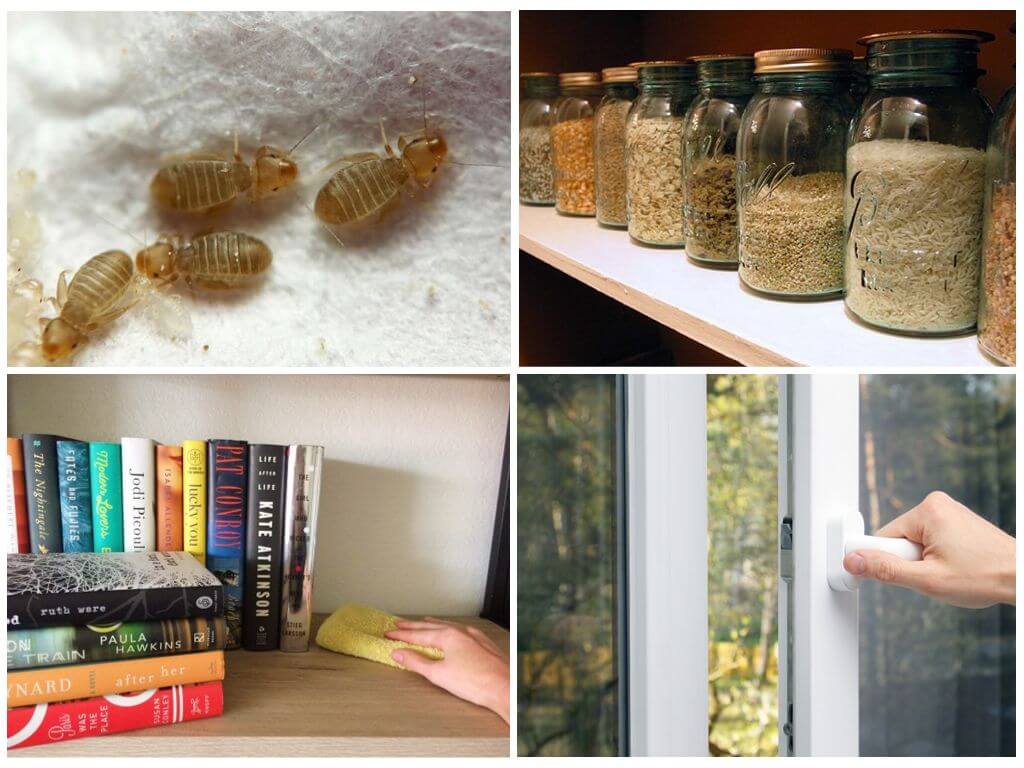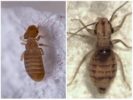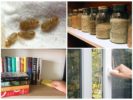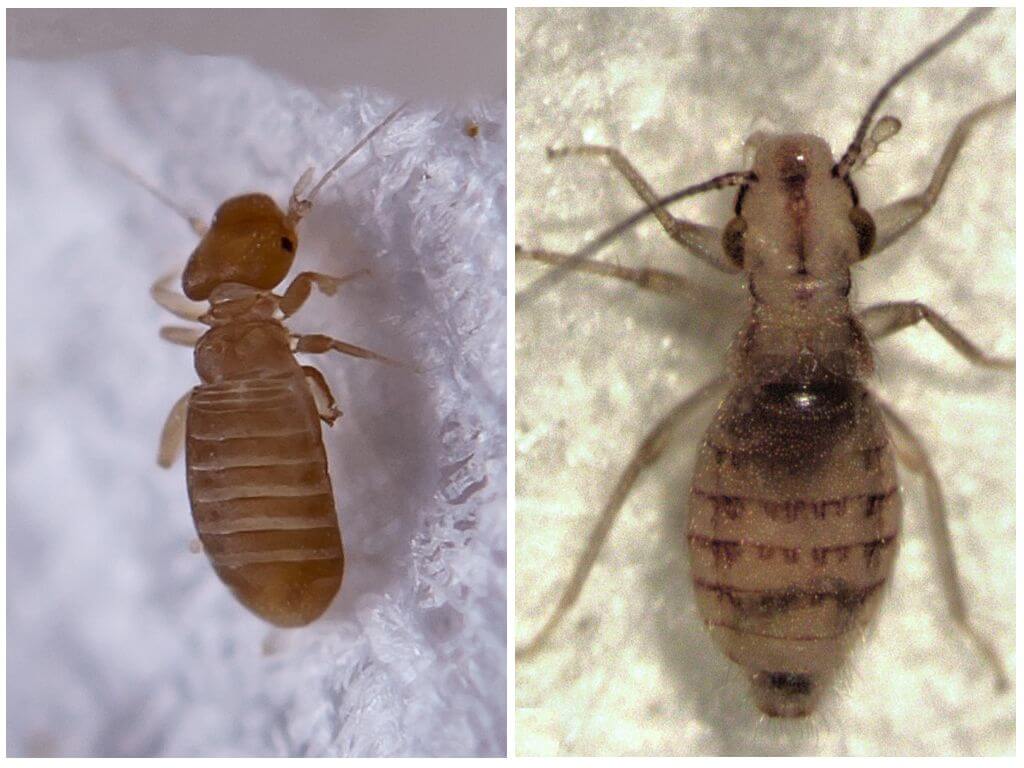- Book and dusty haymakers
- Ways to Combat Hay
Hayworms are small insects that look like lice; some of them have underdeveloped wings. Hayworms justify their name, preferring to eat dry plant materials. But getting into a person’s home, they do not neglect many valuable objects.
Appearance, habitat
In the world there are about 1700 species of hay eaters. Their main population lives in tropical forests. They settle on the branches of trees, in a layer of fallen leaves, in rotten stumps, nests of birds - wherever there are dry remains of plants. They prefer a humid climate and moderately warm temperatures.
Within our country, two species of these insects are found:
- book haymaker or book louse - a small insect 1 mm in size, light brown or white, without wings;
- dusty hay beetle or dusty louse - an insect about 2 mm in size, has small embryo wings, the body color is light yellow with small red spots.
Haymakers in the photo are often found on many pest websites. These insects prefer to settle in wet warehouses, cellars, in archival rooms, libraries. Often are pests of cereals, especially buckwheat. They can live in pots of indoor flowers and eat fallen leaves or particles of humus in the soil.
Nutrition
In the wild, hay bugs prefer to settle in dark hollows, stumps, animal burrows, where there are soft bedding in nests and optimal temperature and humidity are preserved. They can often be found in thickets of lichen, moss, among moldy fungi.
When insects enter a granary or warehouse, they spoil the grains by gnawing their core, thereby making them unsuitable for further use. Once in the apartment, book and dusty lice can ruin the supply of cereals.
Interesting!
Book and dusty lice do not have well-developed jaws and in order to separate pieces of food, they use a special growth on the head as a file. During this process, characteristic clicking and crackling sounds.
The main delicacy is dry vegetation, insects are found in dried herbs, herbaria, dried flowers. Hay-eaters are often found in libraries and paper archives, eating book bindings and paper dust.
Breeding
The main place for hay propagation in a person’s home is flower pots. The female can lay up to 100 eggs at a time, which in 3-4 weeks will turn into larvae. An insect can lay eggs 6 times per year. Such fertility in favorable conditions can bring the number of pests to huge colonies.
Important!
During the laying of eggs, insects cover the clutch with secretions from the rectum. Then particles of these secretions can be on food products, which can lead to serious poisoning and allergic reactions in humans.
If you do not start to fight in time at home with haymakers, they can populate every corner of the apartment and cause serious consequences.
Ways to fight

Hay-eating in an apartment is a serious problem, and you need to correctly approach its solution. To begin with, you can resort to gentle measures to eliminate them:
- regularly sort out cereals in boxes and bags; dispose of expired bulk products on time;
- wipe bookshelves and browse books for pests;
- monitor the soil in flower pots, remove fallen leaves and thin out the ground;
- periodically ventilate the apartment.
Such simple methods will help prevent the appearance of book and dusty lice. When they nevertheless appeared, one should know how to get rid of hayeds in the apartment. If their habitat is a container with cereals, you need to discard the contents and sort out the neighboring cereals. Clean table drawers with cleaning agent.
If insects are found in the book, it should be packed in cellophane and placed in the freezer for several minutes. If book lice have appeared on many books, you need to collect all the literature in a bag and take it out in the cold in the winter or on a hot, ventilated place in the summer. Such temperature changes will destroy the pests. Bookshelves should be thoroughly treated with chemical solutions.
To eliminate parasites on a production scale, special means are used:
- generation of cold or hot fog - a plant spraying artificial fog with an admixture of toxic substances;
- steam generation - heat treatment of premises;
- applying wet chemicals to the surface.
Such processing of industrial premises or public libraries is carried out by employees of special sanitary services. Working with toxic drugs requires special care and protective measures.






